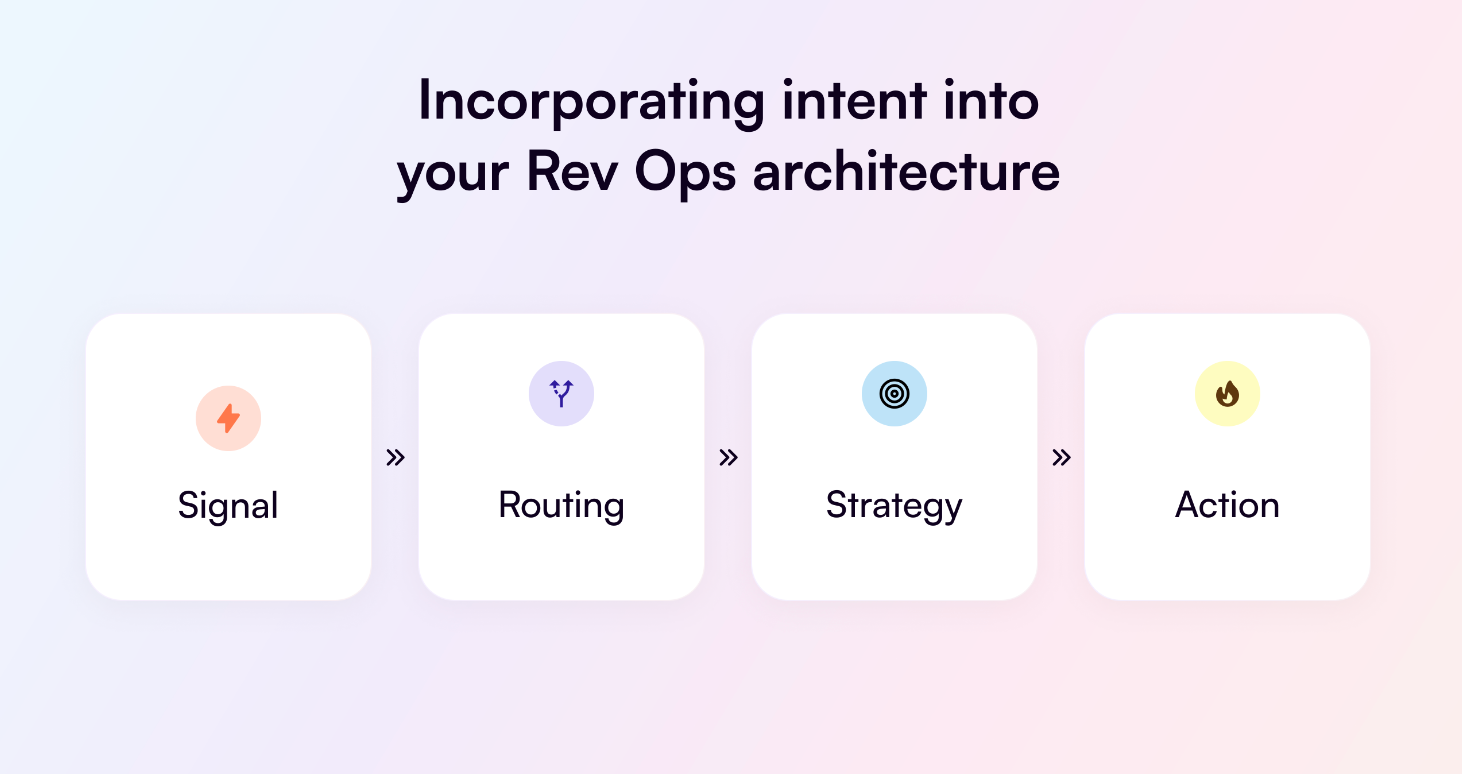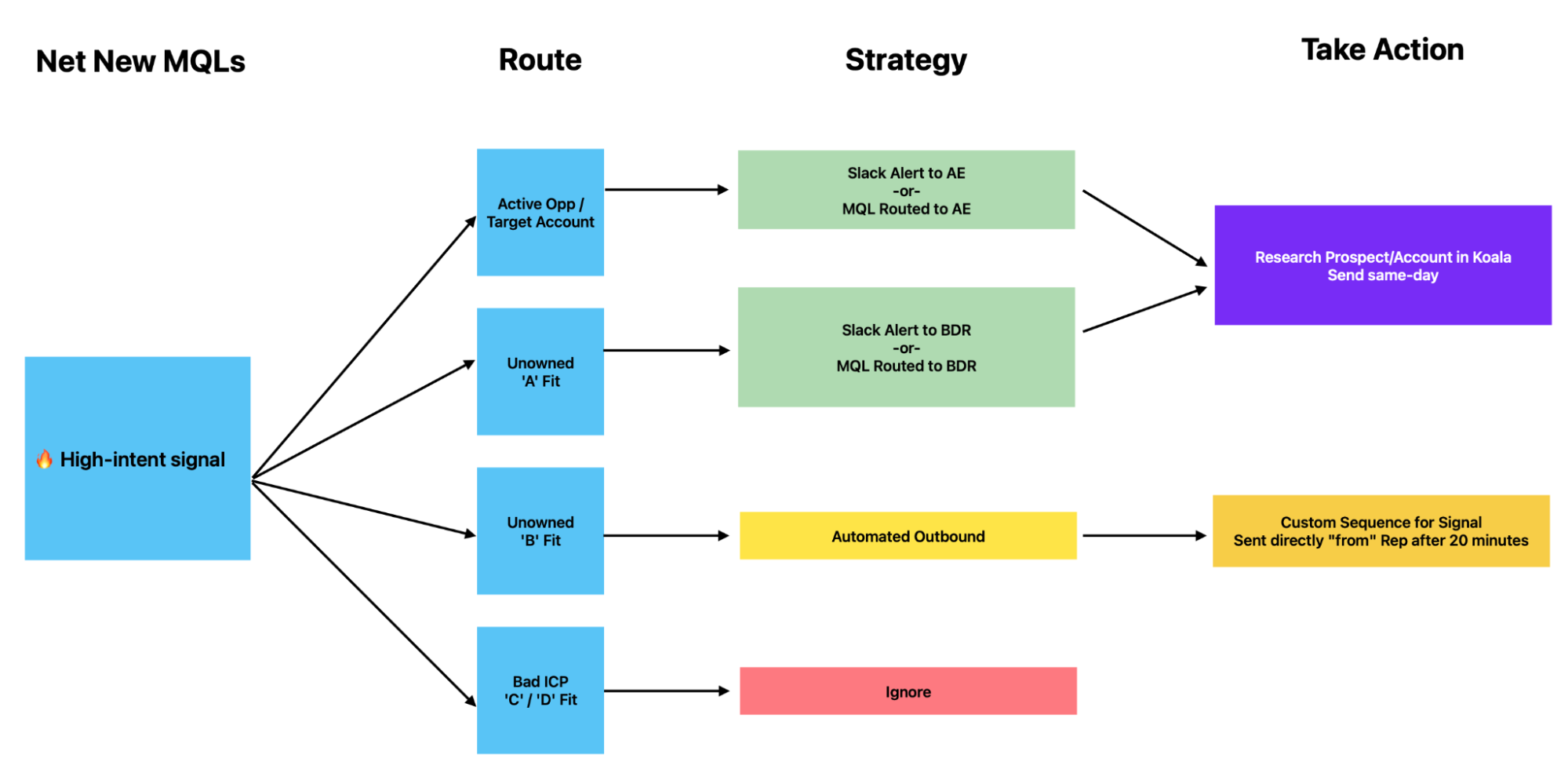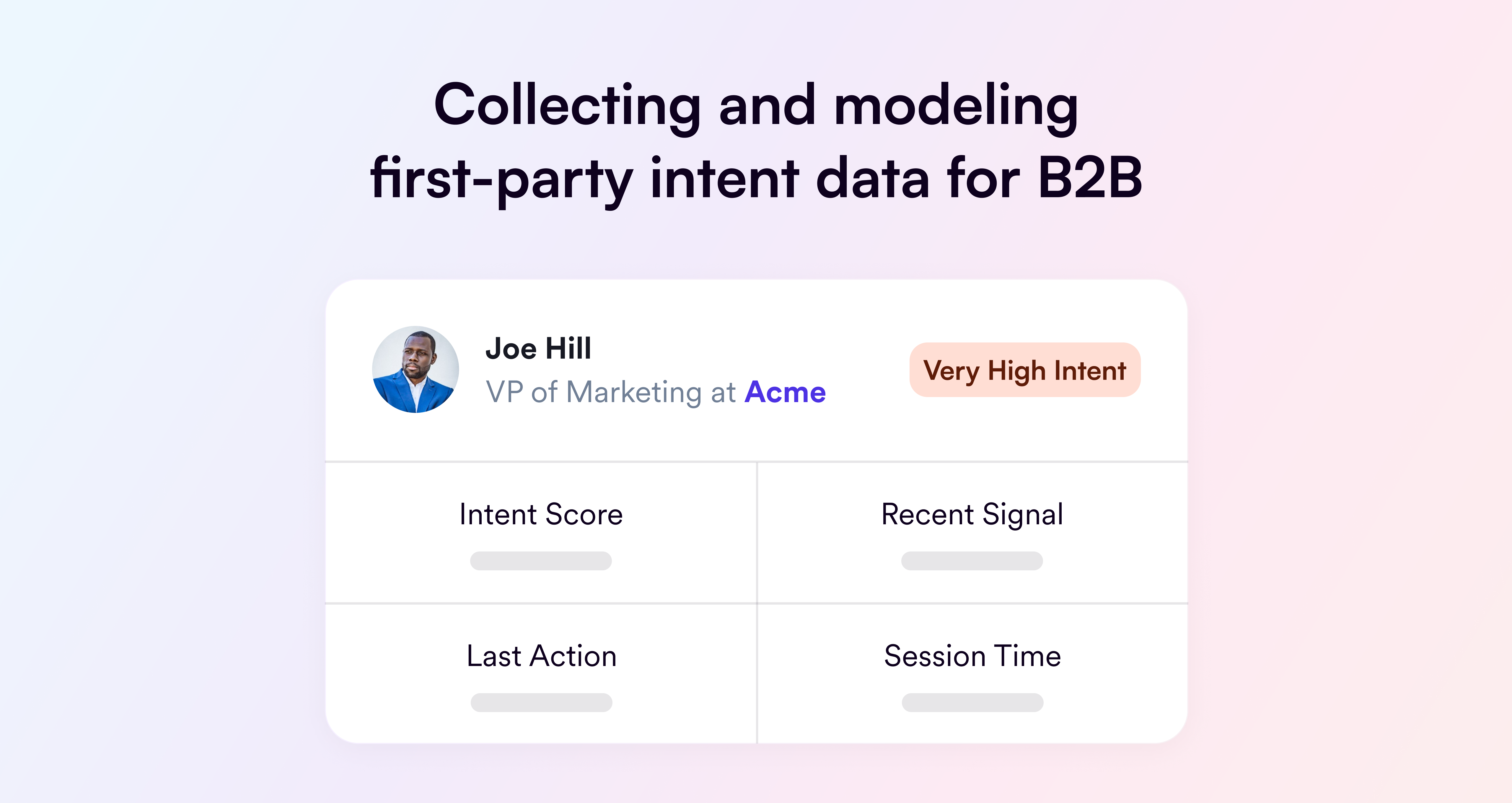Part 4: Incorporating intent into your Rev Ops architecture

In our four-part series, 'Under the Hood: Koala's Data Platform,' we're sharing our insights on the key ingredients necessary for a world-class first-party intent solution and strategies to help sales and marketing teams get the most out of their first-party website traffic.
- Part 1: Website deanonymization: the definitive technical guide
- Part 2: Collecting and modeling first-party intent data for B2B
- Part 3: Finding Signal(s) from the noise
- Part 4: Incorporating intent into your Rev Ops architecture
Once you have clarity on the signals you care about (eg., "Viewed Pricing Page for 30+ Seconds") and the filters (eg., "'A' Accounts Only"), then you'll want to ensure that the Signals make it to the right person in real-time. There are a lot of different ways to slice this within tools (CRM, SEP, Slack), so we'll share the architecture more and more companies are adopting.
Routing Strategy
Think of your Account ICP Fit score as a proxy to answer the question: "how much could this account potentially pay us?" And recall from Part 3 that typically the top 25% of traffic ('A' accounts) is a bullseye ICP, next 25% of traffic ('B' accounts) as fringe ICP, and everything else typically can be ignored.
As such, for a mature organization with a BDR motion, typically we recommend that all 'A' accounts be reviewed by a person and actioned within 4 hours. For 'B' accounts, we recommend that at least some kind of marketing nurture goes out (can also leverage a BDR motion if there is capacity on the team). For 'C' and 'D' accounts, they are viewable in Koala but we don't recommend doing an outbound motion — and if they come inbound to treat with appropriate skepticism (ie., qualify it a lot before advancing the deal!).
Sending Signals
Once you piece together the signals and the routing, it tends to look something like this. Our customers tend to start simple and choose to just send leads to Slack, but some have gotten more advanced over tiem and are doing MQL routing to AEs/BDRs.

Modeling Intent in your CRM
Here are some other common ways we see to model intent in your CRM.
Importing High-IntentAccounts into CRM. You're likely to have a lot of accounts on your website that aren't in your CRM. Most customers auto-import any accounts showing high intent that are missing from their CRM. Before you do this, you'll want to ensure that you have good domain hygiene on your accounts, so that you don't import duplicate accounts.
Importing High-Intent Contacts into CRM. You may want to route unowned contacts who do high-intent activities to Sales. Typically, this is done by enrolling the high-intent contact into a Campaign when the action happens.
Creating custom records for key intent signals (Salesforce) or writing them on the Activity Timeline (HubSpot). This can be a nice way to show key intent signals in the UI of the CRM, so that key intent context exists right where people are doing work.
Enriching Accounts with fit scores. If you don't already have some kind of account score in your CRM, you may want to consider writing Koala's scores across your CRM.
Conclusion
The trickiest thing with intent is that it is fleeting. If you catch it in the moment, it's wildly powerful — you are catching someone with a problem in their moment of research. However, it requires operational excellence to make sure that this intent is always delivered on time, that reps know what to do with it, and that action happens. Without speedy action, the whole system is for naught.
We recommend starting simple on your intent journey – just start sending some of these intent moments to Slack! From there, if the channels get noisy, you can break them up into different channels for different people. And once you're starting to hit a breaking point with that, you can start to automate more of the workflow. Be sure to keep testing and iterating along the way — learning how to respond correctly to different kinds of intent is a hard strategic puzzle to figure out, but can generate a ton of high-quality of pipeline once you crack the nut!
In this 4-part series, we’re exploring the key ingredients necessary for a world-class first-party intent solution and strategies to help sales and marketing teams get the most out of their first-party website traffic. Go further and explore the next articles in our series here:
- Part 1: Website deanonymization: the definitive technical guide
- Part 2: Collecting and modeling first-party intent data for B2B
- Part 3: Finding Signal(s) from the noise
- Part 4: Incorporating intent into your Rev Ops architecture
Tido Carriero
Co-Founder & CEO

